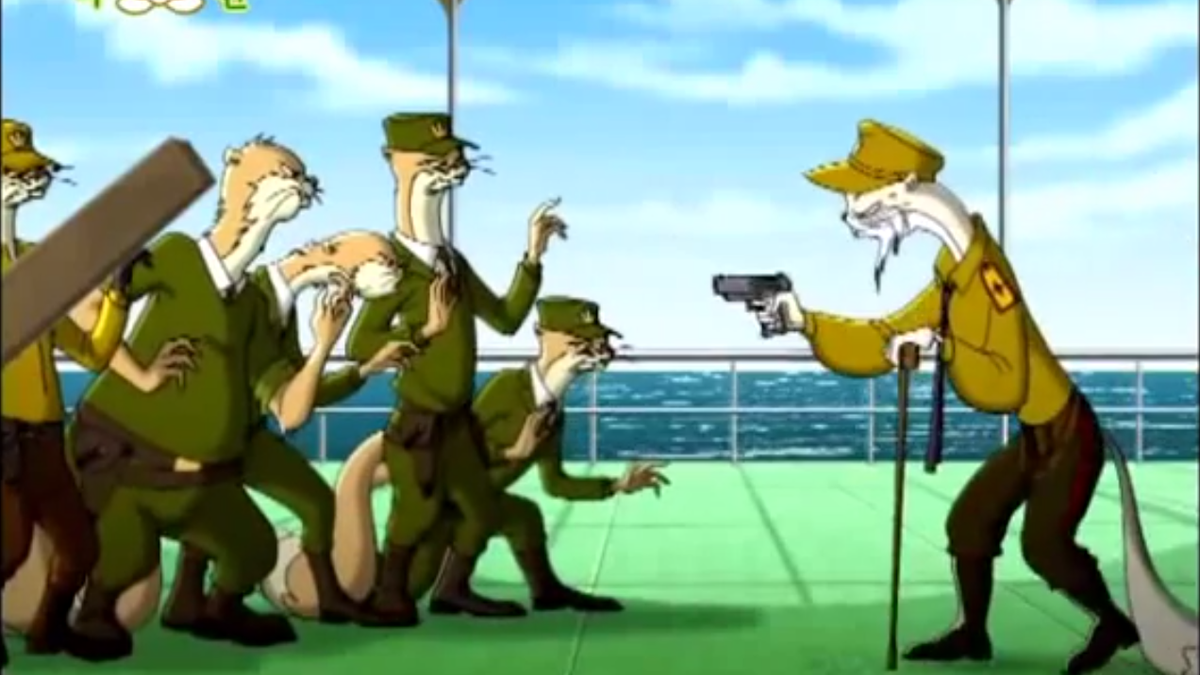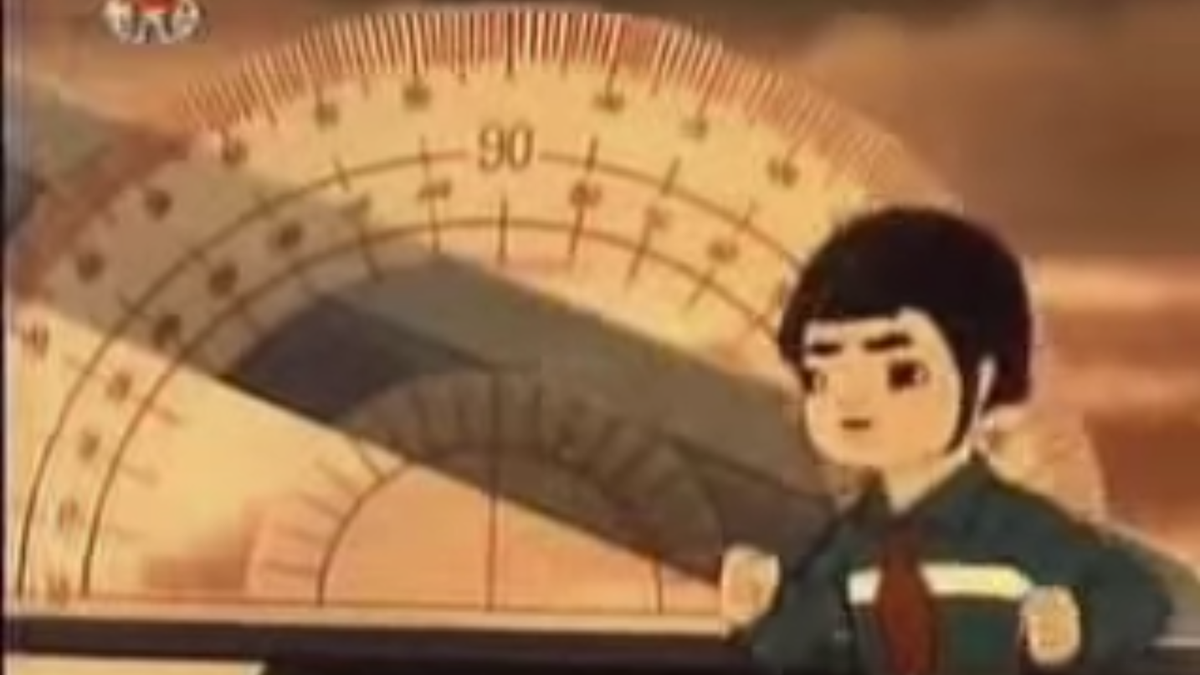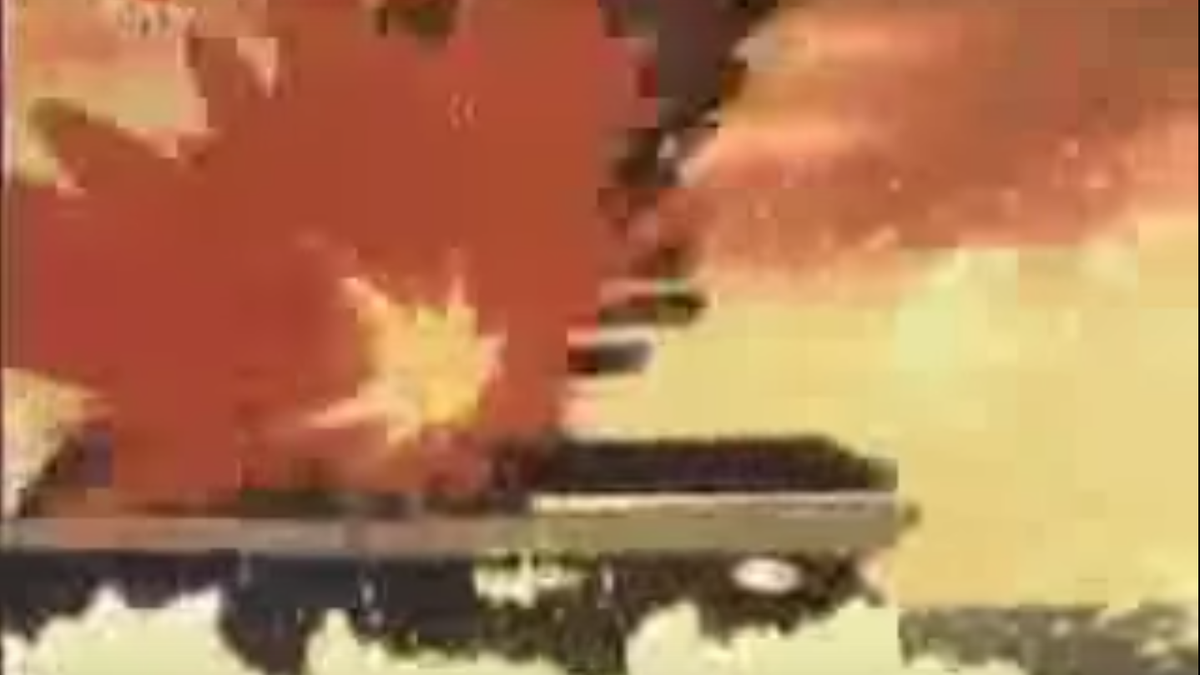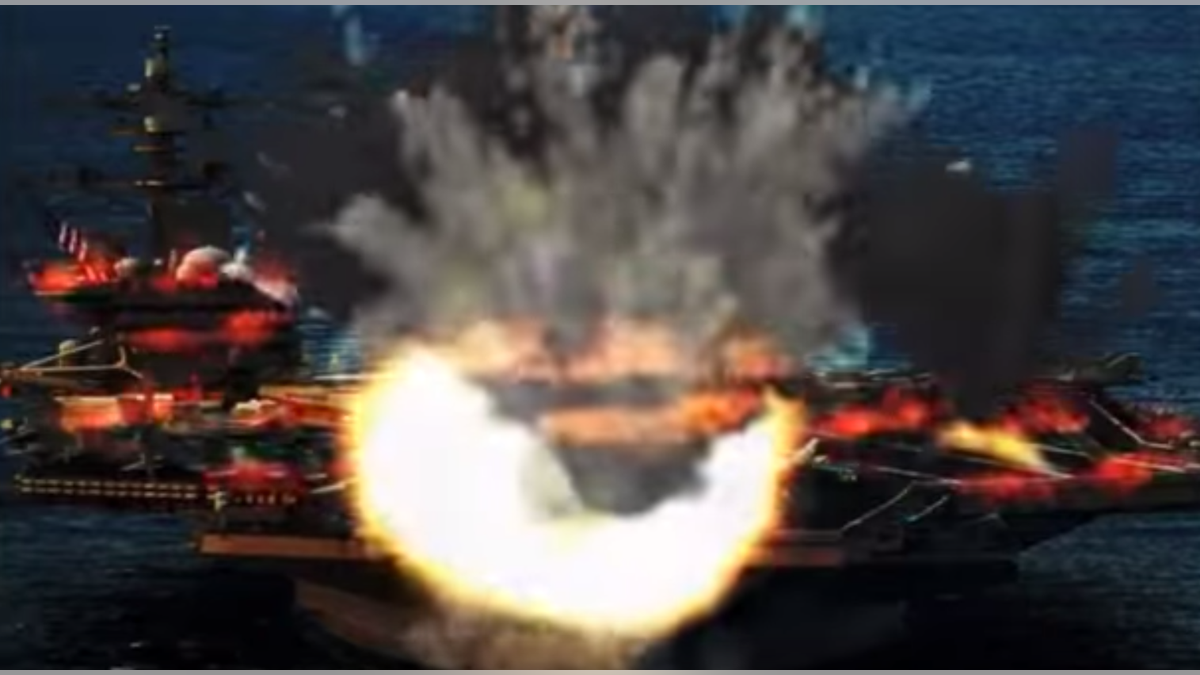
The "Squirrel and Hedgehog" series contains violent content that centers on the North Korean army. (YouTube)
North Korea's anti-U.S. propaganda campaign, which now includes slick videos depicting attacks on American cities and battleships, dates back to the 1960s, when cartoons demonizing the west were used to indoctrinate children of the Hermit Kingdom.
The practice of disguising anti-U.S. messages in children's cartoons reportedly began with Kim Il Sung, the founder of the Democratic People’s Republic of Korea and revered as the “great sun of life.” A propaganda cartoon released in the 1960s shows schoolchildren in battles with the U.S. Navy, firing pencil-like missiles to blow up aircraft carriers. The cartoon, at first blush, appears educational and even has the children using a protractor to measure the launch angle of the rocket. But the message is clear – the “imperial” U.S. is trying to invade North Korea.

The show appears educational, showing the animated characters using a protractor to measure the angle to fire a missile. (YouTube)
The animated shows have innocent names, such as “Squirrel and Hedgehog,” which has dozens of episodes uploaded to YouTube. The popular series, produced by state-run SEK studios, is something children in North Korea watch daily, according to the Los Angeles Times.
“It’s a classic,” a North Korean guide told the Los Angeles Times. “Everyone knows Squirrel and Hedgehog.”
In one episode, the squirrels and hedgehogs are part of the North Korean Army fighting against the villainous weasels, representing the Japanese Army. At one point, the weasel captain aims a gun at his own troops and fires.
“You’re all worthless b-------,” the translated subtitles say.

The 1960s North Korean cartoon shows schoolchildren firing missiles at the U.S. Navy. (YouTube)
King Jong Un seemed to take on similar propaganda tactics during his regime. In 2015, Kim reportedly had the cartoon, “The Boy General” remade nearly a decade after the last episode of the popular series aired. The show features a child warrior fighting off foreign invaders, including the Chinese and South Korean military. The animated series glamorizes North Korean history and culture with its “military first” theme.
The relaunch of the show drove hundreds of excited people to a public viewing party in Pyongyang, Vice reported. Andray Abrahamian, of the nonprofit Choson Exchange that teaches North Korean citizens business skills, said people were “transfixed” by the show.
"Nearly everyone was glued to the screens," Abrahamian said.
A children’s cartoon about a group of animals in a forest, titled "The Hedgehog Defeats the Tiger," aired on North Korean state television in August. The hedgehog, representing North Korea, overcomes the “bullying” tiger, who threatens the other animals into submission.
The tiger in the cartoon could be mistaken for anyone, but Kim Jong-son, a worker at the Pukchang Thermal Power Complex, told state-run Korean Central News Agency the current U.S. “ignorance” reminded him of the classic tale, the BBC reported.
"In sharp contrast to the brave hedgehog, the characters of big animals winced at the swashbuckling tiger, reminding me of the present reality where no one questions America," Kim said. "Watching them, I am very proud of the invincible might of my country.”
These days, North Korean propaganda released by state media are far more literal. Many of them show computer-generated scenes of the regime’s missiles attacking U.S. military vehicles, or blowing ships to pieces. The latest video released earlier this week began with images mocking President Trump as a “mad man” before it flashed to a submarine-launched missile striking the USS Carl Vinson.
Words emblazoned on the screen read: "Should F-35, B-1B or the Carl Vinson lead the U.S attack, they will head to the grave in that order."

North Korea released a propaganda video showing missiles destroying USS Carl Vinson. (YouTube)
Another video released earlier this summer showed Trump peering over a photoshopped graveyard in Guam, after Kim Jong Un threatened to strike the U.S. territory with a missile.
